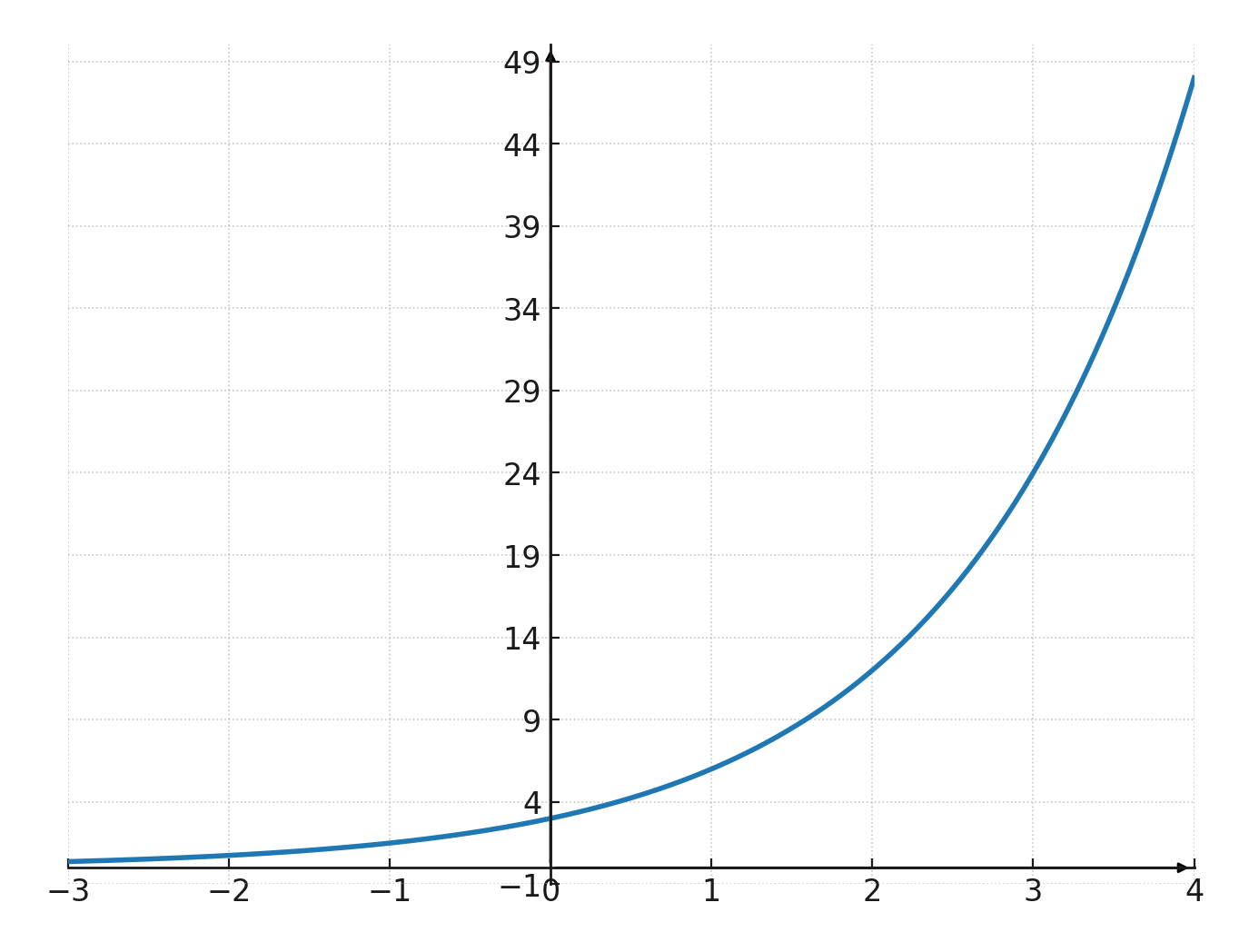Exponential function
An exponential function is a function where the variable \(\large x\) is in the exponent.
It is written in this form:
$$ \large f(x)=b \cdot a^x $$
There are some requirements for \(\large a\) and \(\large b\):
- \(\large a > 0\) and \(\large a \neq 1\)
- If \(\large a = 1 \), the function becomes constant with no growth
- If \(\large a \le 0\), the function cannot be calculated for all real numbers, but only for integers
- \(\large b \neq 0\)
- If \(\large b = 0 \), the function will always be 0 in all cases, because it is multiplied by 0
If you draw an exponential function as a graph, it will become a steep increasing or decreasing curve.
- \(\large a\) is called the growth factor and indicates how fast the curve grows
- \(\large b\) indicates where the curve intersects the y-axis
The graph will always lie on one side of the x-axis.
The x-axis acts as an asymptote, which means the curve can approach the axis but never cross it.
Growth factor and intercept
\(\large a\) is called the growth factor:
- If \(\large a>1\) the curve grows (increases)
- If \(\large a<1\) the curve decreases
\(\large b\) indicates that the curve will intersect the y-axis at \(\large (0,b)\)
If we look at this function:
$$ \large y=3 \cdot 2^x $$
We can see that it is an increasing curve, because \(\large a=2\)
We can also see that it intersects the y-axis at \((0,3)\)
Example
We try the function \(\large y=3 \cdot 2^x\)
| \(\large x\) | 1 | 2 | 3 |
| \(\large y\) | 6 | 12 | 24 |
